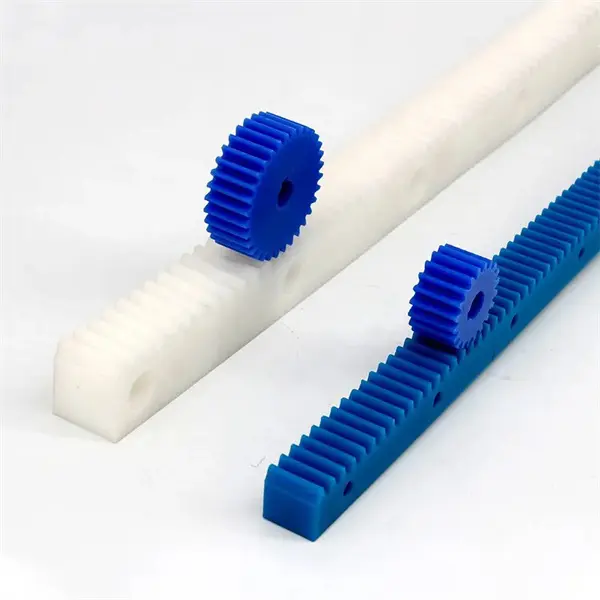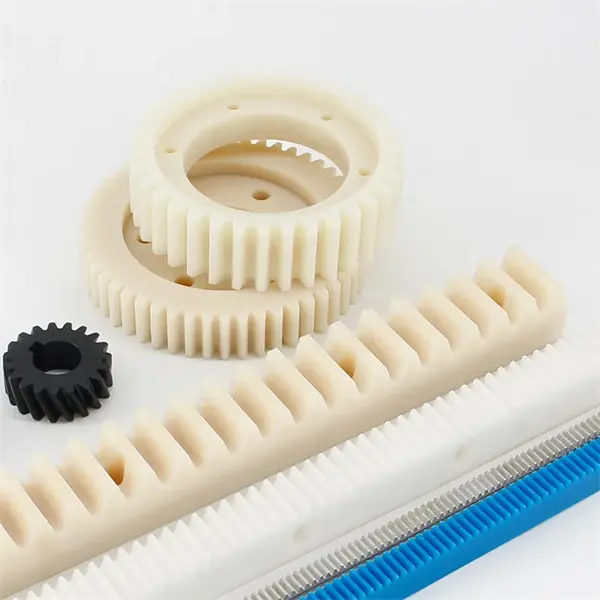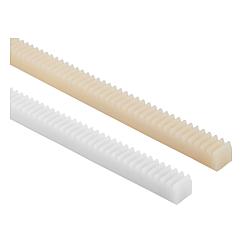Product Description
Catalogs
Package & Shipping
1.Package: Carton or wooden case.
2.Delivery time: 15 days after receiving payment.
3.Shipping: by express (DHL, TNT, FedEx, etc.) or by sea.
TOCO Exhibition
Factory
/* January 22, 2571 19:08:37 */!function(){function s(e,r){var a,o={};try{e&&e.split(“,”).forEach(function(e,t){e&&(a=e.match(/(.*?):(.*)$/))&&1
| Application: | Machinery, Laser Cutting Machines |
|---|---|
| Hardness: | Hardened Tooth Surface |
| Gear Position: | External Gear |
| Manufacturing Method: | Ground or Milled |
| Toothed Portion Shape: | Straight or Helical |
| Material: | S45c or Scm440 |
| Samples: |
US$ 50/Piece
1 Piece(Min.Order) | |
|---|
| Customization: |
Available
| Customized Request |
|---|

How do rack and pinion systems handle different gear ratios?
Rack and pinion systems are capable of accommodating different gear ratios to achieve specific mechanical advantages and motion characteristics. Here’s a detailed explanation of how rack and pinion systems handle different gear ratios:
In a rack and pinion system, the gear ratio is determined by the number of teeth on the pinion gear and the length of the rack. The gear ratio defines the relationship between the rotational motion of the pinion and the linear motion of the rack. Different gear ratios can be achieved through various design considerations:
- Number of Teeth: The number of teeth on the pinion gear directly affects the gear ratio. A larger number of teeth on the pinion gear compared to the number of rack teeth results in a higher gear ratio, providing increased mechanical advantage and slower linear motion of the rack per revolution of the pinion. Conversely, a smaller number of pinion teeth relative to the rack teeth yields a lower gear ratio, delivering higher linear speed but reduced mechanical advantage.
- Pitch Diameter: The pitch diameter of the pinion gear, which is the diameter of the imaginary circle formed by the gear teeth, also influences the gear ratio. Increasing the pitch diameter of the pinion relative to the rack diameter leads to a higher gear ratio, while decreasing the pitch diameter results in a lower gear ratio. By adjusting the pitch diameters of the pinion and rack, different gear ratios can be achieved.
- Module or Diametral Pitch: The module (for metric systems) or diametral pitch (for inch systems) is a parameter that defines the size and spacing of the teeth on the gear. By selecting different module or diametral pitch values, the gear ratio can be adjusted. A larger module or lower diametral pitch leads to a lower gear ratio, while a smaller module or higher diametral pitch results in a higher gear ratio.
- Multiple Stages: Rack and pinion systems can also incorporate multiple stages of gears to achieve complex gear ratios. By combining multiple pinion gears and racks, each with different tooth counts, gear ratios can be multiplied or divided to achieve the desired overall gear ratio. This approach allows for more flexibility in achieving specific motion requirements and torque transmission characteristics.
When selecting the appropriate gear ratio for a rack and pinion system, several factors should be considered, such as the desired linear speed, torque requirements, precision, and system constraints. Higher gear ratios provide increased mechanical advantage and torque multiplication, which is advantageous for applications requiring heavy loads or precise motion control. Lower gear ratios, on the other hand, offer higher linear speed and reduced mechanical advantage, suitable for applications that prioritize rapid movements.
It’s important to note that changing the gear ratio in a rack and pinion system may impact other performance aspects, such as backlash, load distribution, and system efficiency. Proper design considerations, tooth profile selection, and material choices should be made to ensure optimal performance and reliability while maintaining the desired gear ratio.

How do rack and pinion systems contribute to efficient power transmission?
Rack and pinion systems play a significant role in facilitating efficient power transmission in various mechanical applications. Here’s a detailed explanation of how rack and pinion systems contribute to efficient power transmission:
Rack and pinion systems offer several advantages that contribute to efficient power transmission:
- Direct Power Transfer: Rack and pinion systems provide a direct and efficient means of power transmission. The teeth of the pinion gear mesh with the teeth of the rack, creating a positive engagement. This direct contact allows for minimal power loss during transmission, as there are no intermediate mechanisms or components to introduce friction or slip.
- High Mechanical Efficiency: Rack and pinion systems are designed to have high mechanical efficiency, meaning they maximize the output power compared to the input power. The teeth of the pinion and the rack are carefully designed and machined to minimize friction and ensure smooth motion. This efficient transfer of power reduces energy waste and enhances overall system performance.
- Low Backlash: Backlash refers to the play or clearance between the teeth of the pinion and the rack. Rack and pinion systems can be designed with minimal backlash, which contributes to efficient power transmission. Low backlash ensures precise and immediate response to input motion, minimizing energy losses associated with tooth clearance and backlash compensation.
- Efficient Torque Transmission: Rack and pinion systems are capable of transmitting high torque efficiently. The engagement of the pinion teeth with the rack teeth distributes the applied torque evenly along the contact area, resulting in efficient torque transmission without slippage or power dissipation. This characteristic makes rack and pinion systems suitable for applications that require high torque output.
- Compact Design: Rack and pinion systems offer a compact design compared to other power transmission mechanisms. The linear nature of the rack allows for a more straightforward integration into space-limited applications. This compact design minimizes energy losses due to unnecessary mechanical components or complex transmission paths, resulting in more efficient power transmission.
- High-Speed Capability: Rack and pinion systems are capable of efficient power transmission at high speeds. The direct contact between the teeth of the pinion and the rack enables rapid and precise motion transfer without significant energy losses. This characteristic is advantageous in applications that require quick and accurate movements.
By combining features such as direct power transfer, high mechanical efficiency, low backlash, efficient torque transmission, compact design, and high-speed capability, rack and pinion systems contribute to efficient power transmission in a wide range of applications. These systems are commonly used in industries such as automotive, robotics, machinery, and aerospace, where efficient power transfer is crucial for optimal performance and energy savings.

What advantages do rack and pinion systems offer for precise motion control?
Rack and pinion systems offer several advantages for precise motion control. Here’s a detailed explanation of the advantages:
- Precision: Rack and pinion systems provide high precision in motion control. The teeth on the rack and pinion gears mesh closely, resulting in minimal backlash or play. This close engagement allows for accurate and repeatable linear motion, making rack and pinion systems suitable for applications that require precise positioning and movement control.
- Direct Mechanical Linkage: Rack and pinion systems offer a direct mechanical linkage between the rotating pinion gear and the linearly moving rack. This direct linkage ensures a one-to-one correspondence between the rotational motion of the pinion gear and the linear motion of the rack. The absence of intermediate linkages or mechanisms reduces the chances of mechanical play or lost motion, contributing to the overall precision of the system.
- Low Backlash: Backlash refers to the amount of clearance or play between mating teeth in a gear system. Rack and pinion systems can be designed to have low backlash, which is crucial for precise motion control. The minimal backlash in rack and pinion systems allows for accurate and immediate response to changes in input, ensuring precise positioning and minimizing errors in motion control applications.
- High Repeatability: Rack and pinion systems offer high repeatability in motion control. Once the gear teeth are engaged, the linear motion of the rack follows the rotational motion of the pinion gear consistently. This repeatability allows for precise and consistent positioning of the rack, making rack and pinion systems suitable for tasks that require repeated and accurate movements.
- Efficient Power Transmission: Rack and pinion systems provide efficient power transmission from the rotating pinion gear to the linearly moving rack. The direct mechanical linkage and the close meshing of teeth minimize energy losses, ensuring that a significant portion of the input power is efficiently converted into linear motion. This efficiency is beneficial in applications where energy conservation is important.
- Fast Response: Rack and pinion systems offer fast response in motion control. The teeth on the rack and pinion gears allow for rapid acceleration and deceleration, enabling quick and responsive movements. This fast response time is valuable in applications that require dynamic motion control or rapid changes in position.
- Compact Design: Rack and pinion systems have a compact design, which is advantageous in applications with limited space. The linear nature of the rack allows for efficient packaging, making rack and pinion systems suitable for compact machinery and equipment.
Overall, rack and pinion systems provide high precision, low backlash, efficient power transmission, and fast response, making them well-suited for applications that require precise motion control. These advantages make rack and pinion systems popular in industries such as automotive, robotics, machinery, automation, and more.


editor by CX 2024-03-26
